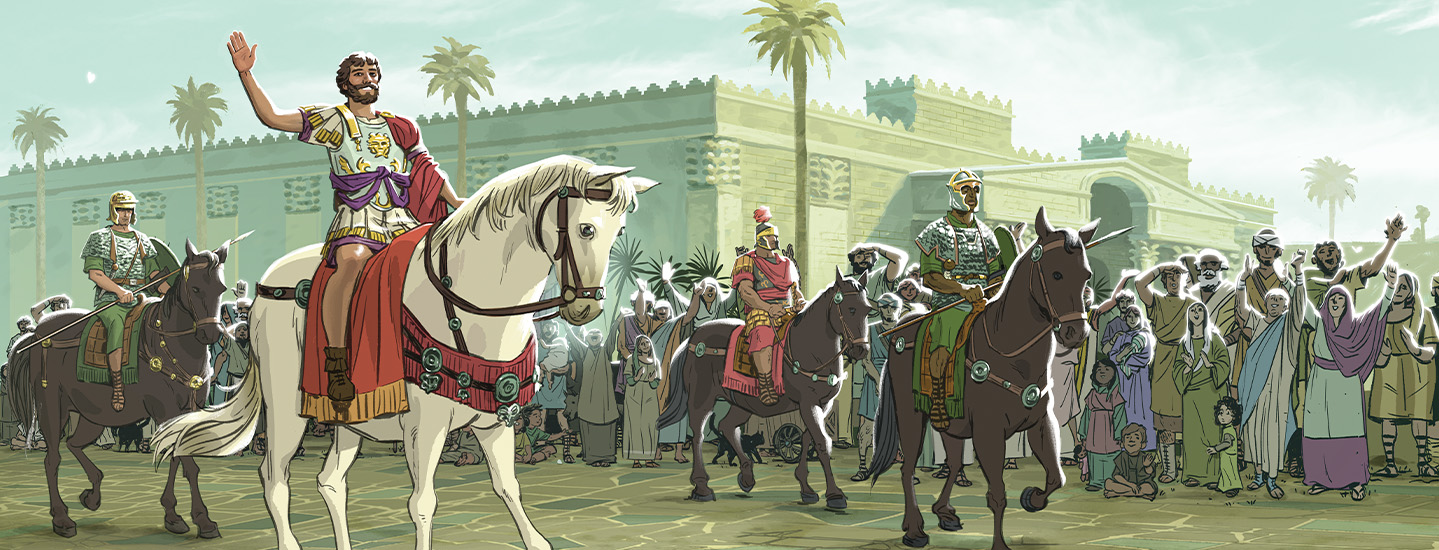When Roman emperor Hadrian came to town, it was as if a world-famous celebrity had arrived. Take, for example, the scene in Palmyra in 129 A.D. Crowds of men, women, and children packed the streets of the ancient Syrian city, eager to catch a glimpse of their leader.
Finally, Hadrian came into view, surrounded by his massive entourage of advisers and guards. He raised a hand and waved to the townspeople, and they erupted into cheers.
After all, Hadrian wasn’t just any leader. He was the head of one of the greatest civilizations of all time. Known for its military strength, the Roman Empire existed from 27 B.C. to 476 A.D. When Hadrian took power nearly 2,000 years ago, in 117 A.D., the empire was at its largest—stretching across Europe into Asia and Africa (see map, below).
Hadrian was known for crossing his sprawling empire by foot or on horseback. He used those treks to inspect the military and keep tabs on the kingdom’s provinces, most of which were conquered lands. But there was another reason for his journeys: Hadrian loved to travel.
During his reign, which lasted until 138 A.D., he explored nearly every corner of his empire. Along the way, he forged a legacy that would influence the area for generations.
When Roman emperor Hadrian came to town, it was as if a world-famous celebrity had arrived. For example, take the scene in Palmyra in 129 A.D. Crowds of men, women, and children packed the streets of the ancient Syrian city. They were eager to get a brief look at their leader.
Finally, Hadrian came into view. He was surrounded by his huge entourage of advisers and guards. He raised a hand and waved to the townspeople. They erupted into cheers.
After all, Hadrian was not just any leader. He was the head of one of the greatest civilizations of all time. The Roman Empire existed from 27 B.C. to 476 A.D. It was known for its military strength. Hadrian took power nearly 2,000 years ago, in 117 A.D. At that time, the empire was at its largest. It stretched across Europe into Asia and Africa (see map, below).
Hadrian was known for crossing his spread-out empire by foot or on horseback. He used those long trips to inspect the military. He also kept track of the kingdom’s provinces. Most of them were conquered lands. But there was another reason for his journeys: Hadrian loved to travel.
During his reign, which lasted until 138 A.D., he explored nearly every corner of his empire. Along the way, he produced a legacy that would influence the area for generations.

